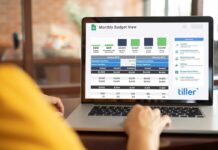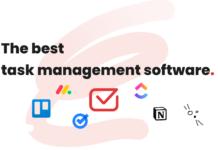
The more accurate your demand forecast, the less time your products spend in inventory. Learn how you can make the most of demand forecasting for your business.
Predicting the future seems pretty impossible in our day-to-day lives, but it’s possible and necessary in supply chain. Before you imagine someone sitting with a crystal ball, ready to tell you your business’s future, let us stop you. Forecasting is a sophisticated process in business involving numerous algorithms.
Demand forecasting is the backbone of any business’s supply chain. A little peek into your future demand helps you understand your product performance, buyer behavior, market disruptions, & more. It goes a long way in helping you cater to your consumers better. Most businesses rely on demand planning and forecasting software for a smoothly running supply chain.
If your business doesn’t use a forecasting solution yet, this blog might just be the right one for you. To understand the benefits of demand forecasting & how you can use it, keep reading.
Why do you need demand forecasting?
Accurate demand forecasting go a long way in enhancing various business operations. When you can forecast demand, it aids every process from production to delivery. You can arrange all necessary factors for a smooth supply chain without bottlenecks. The forecasts reduce your reliance on vague assumptions & help you control business activities better than before.
Here are a few significant reasons why your business needs demand forecasting.
Better inventory management
When you know which products you’ll require & when, you can equip your inventory likewise. This way, you only store the necessary products & your products spend less time in the inventory. This reduces the risk of deadstock, avoids inventory waste, & helps you save on unnecessary warehousing costs.
Plan your production
Based on your forecast demand, you can manage your current production to ensure the availability of your products and avoid overstocking. You can plan your resources and adjust the pace of your production process to meet your demand. You can employ an adequate workforce to help you cater to this demand.
Manage supplier relationships
Using forasting tools you can decide when to place orders based on available resources, vendor lead times, and demand. You can ensure your resources are delivered in time without haste by placing your orders beforehand. This works in enhancing relationships between you and your suppliers.
Increase customer satisfaction
Besides being able to cater to your customers’ demands in time, you can also plan the right safety stock if the demand spikes. When your products are available to cater to demand, your customers stay happy & thus loyal to your business.
Save on costs
When you understand your demand, you can manage your budget expertly. You can save sales that would otherwise be lost due to a stockout. In the same way, you can save on warehousing costs & money lost to inventory waste.
Types of demand forecasts
There is no one-size-fits-all approach to demand forecasting. You can generate demand forecasts through numerous methods. While some focus on quantitative methods, others rely on qualitative ones. You can use more than one technique to ensure the accuracy of your forecasts. The following are the major types of demand forecasts used by businesses.
Active & passive demand forecasts
The active demand forecast is used by startups & growing companies that don’t have much data available. It considers industry research & other external data to predict future demand. Contrary to this, passive forecasts rely on past sales data to predict future sales. They require an extensive amount of data from the business. Hence, it is usually preferred by organizations that have enough data available.
Short-term & long-term demand forecasts
Short-term demand forecasts are concerned with short periods & are helpful in managing day-to-day processes. They are helpful for just-in-time (JIT) supply chain or frequently changing lineups. On the other hand, long-term forecasts focus on business growth in the long run and can be conducted for periods longer than a year.
Macro & micro demand forecasts
Macro forecasts consider large-scale, external aspects that might disrupt business, for example consumer trends, competition, and economic disruption. Micro forecasts focus on the finer details of factors considered in macro forecasts, like specific industries, segments, products, & more.
Internal demand forecasts
With internal demand forecasts, you can predict changes in resources, workforce, and workload required to meet future demand. Internal demand forecasts help you manage your production capacity as per your projected demand and also help maximize productivity.
How can you forecast demand?
As we mentioned, there are numerous qualitative & quantitative techniques to forecast your product demand. To increase accuracy you need a mix of techniques involving both these methods. You can follow a four-step strategy to forecast your product demand.
Set the objectives for your forecast
Collect & record all existing data, like ordered SKUs & their details
Measure & analyze your recorded data using forecasting techniques
Allocate the budget based on the forecast
As tempting as it sounds, forecasting demand manually can be tricky, especially for scaling companies. Involving more SKUs means a greater risk of error. The best-known way to forecast your demand is by using expert forecasting software solutions, like those provided by Avercast.
What affects your demand forecasts?
When creating a demand forecast, your demand forecasting tools consider various factors. These factors act as the defining factors of your forecast. When these change your forecast is affected.
Seasonality & trends
Your demand highly depends on both seasonality & trends. Most brands have a peak season where their product demand spikes & off-seasons where it slows down. Global scenarios influence trends, and these trends also cause demand to shift. Both these factors highly affect your demand forecasts.
Geography
High shipping costs can be a pain for businesses that sell physical products. If your production unit or warehouses are far from the geographic locations where most customers reside, your demand forecast will be affected.
Competition
Your demand can be affected by your competitor’s performance. As new competitors enter the market, it can change your demand forecast drastically. In addition, how well your competitors perform, their pricing, & how preferable they are can also affect your demand.
Types of goods
Forecasts can change depending on the type of goods. For products with a low shelf-life, your demand forecasts need to be highly accurate to avoid inventory wastage.
Price of goods
Pricing plays a crucial role in affecting the accuracy of your forecasts. When you change your pricing ever so slightly compared to your competitors, it affects your demand forecast. In fact, it’s among the top factors that affect your forecasting.
Pick the right demand forecasting software for your business
Choosing the best demand forecasting software for your business can seem tricky. Companies have different requirements, and it can be hard to find a tool that caters to that requirement perfectly. Luckily, Avercast proficiently provides accurate demand forecasting software that uses 208 advanced algorithms to forecast your demand.
Avercast demand planning & forecasting software allows you to predict demand for up to 5 years in the future. The custom reporting system makes it easier for you to modify forecasts for your requirements.
Want to know more about our solutions? Get in touch with us and book a free demo today!











